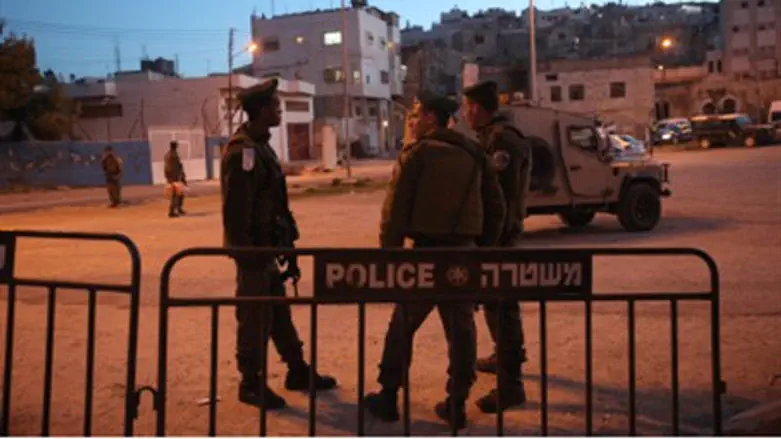
Alert Border Police officers foiled a stabbing on Tuesday near the Tomb of the Patriarchs (Maarat Hamachpelah) in Hevron.
The would-be attacker was a 21-year-old man from the Palestinian Authority Arab town of Tzurif, known for its animosity to Israel and the number of terrorists who came from the town, located on the road leading south from Gush Etzion to the turnoff to Beit Shemesh or Tel Aviv.
He was arrested when officers realized he was hiding a sharpened tool behind his back.
The man admitted that he had planned to stab a soldier “in revenge, because they arrested me in Beit Shemesh.” He was taken in for further questioning.
Attempts to stab soldiers are extremely common near the Tomb of the Patriarchs. A young terrorist attempted to stab soldiers at the site in late October; attempted stabbings took place in June and July as well.
A terrorist managed to stab a Border Police officer at the holy site in June. In September, an IDF soldier was shot and killed a short distance from the tomb.
The Tomb of the Patriarchs is one of Judaism’s holiest sites. According to Jewish tradition it is the burial place of the Biblical patriarchs and matriarchs Avraham and Sarah, Yitzchak (Isaac) and Rivka (Rebecca), Yaakov (Jacob) and Leah. The Biblical matriarch Rachel was buried separately, in Bethlehem; her tomb, too, is a Jewish holy site.
From roughly the seventh century of the Common Era, the holy site was alternately used as a mosque or a church by various conquerors. From the late 12th century the site remained a mosque.
Jewish and Muslim worshipers previously shared the site, but access was later split for safety reasons, with Jewish and Muslim worshipers each given access to four of the six tombs in the compound.